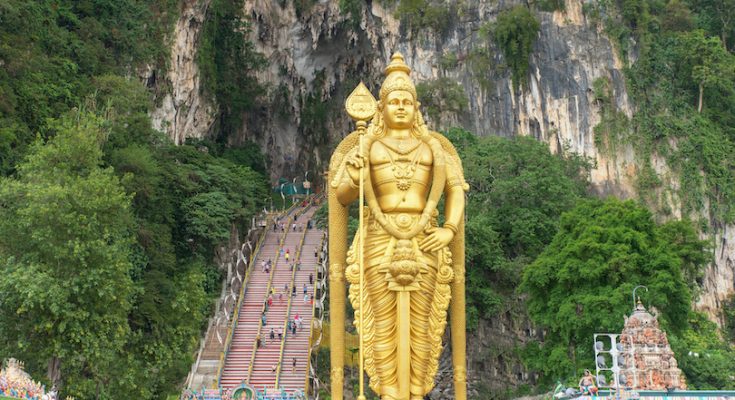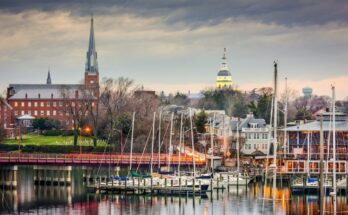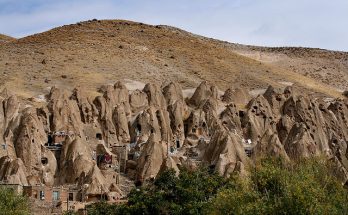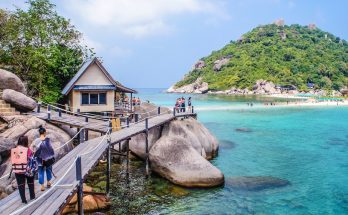Known for its sprawling landscapes rich with rainforests and mountain peaks, and rich cultural diversity, Malaysia is grounded as an ideal getaway travel destination. Most tourists are from neighboring countries such as Singapore and Indonesia but a growing number of other foreign tourists are discovering this country as well.
Malaysia offers two very distinct experiences: the peninsula and Borneo (an island shared with Indonesia and Brunei). The peninsula or West Malaysia is a mix of Malay, Chinese and Indian flavors with an efficient and modern capital, Kuala Lumpur. Malaysian Borneo features some of the most interesting places in Malaysia with a wild jungle, orangutans, granite peaks and remote tribes. Combined with some luxury resorts and colonials towns, Malaysia, for most visitors, presents a happy mix.
The numerous islands and rural areas offer chances to trek through jungles, sunbathe on beaches, and snorkel through rich marine life ecosystems. However, this spectacular part of the world has much more things to do for visitors, so strap on your camera, and it’s time to see the top attractions in Malaysia!
23. Gunung Gading National Park
Witness the uniqueness of the Rafflesia flower in bloom at Gunung Gading National Park in Kuching Division, Sarawak.
The Rafflesia is the world’s largest flower, growing up to one meter in diameter. The gigantic flower species is a parasitic plant that requires 18 months to infest and take over a host vine before taking nine months to mature and then flower for four to five days. They can bloom anytime of the year, though the best time is November through January.
Other attractions draw visitors to Gunung Gading National Park beside the Rafflesia flower, including the numerous jungle trails, streams, waterfalls, and the famous Gunung Gading Summit Trail, the longest and most challenging trail in the park. It takes three to four hours to reach the summit of Gading hill, though the rewarding panoramic views are worth it!
22. Manukan Island

The second largest island in Tunku Abdul Rahman National Park, Manukan Island, is off the coast of Kota Kinabalu and accessible by boat.
The island has significant markers that draw frequent visits from tourists and Kota Kinabalu residents. One of them is the long stretch of white-sanded beach made paired with sparkling clear waters.
As the waters are easy to swim in for beginners and are refreshingly clear, Manukan Island is the best snorkeling site out of all five islands in Tunku Abdul Rahman National Park. It’s not hard to find clownfish or other vibrant-colored fish lazily swimming about.
21. Kek Lok Si Temple

Located in Air Itam, Penang, Malaysia, Kek Lok Si Temple was built in 1891. It remains the largest Buddhist temple in Malaysia and a vital pilgrimage center for Buddhists traveling from other countries, such as Singapore and the Philippines.
The intricate design of Kek Lok Si Temple features a seven-tired Ban Po Thar pagoda, a towering 36.5-meter bronze Kuan Yin statue, stunning pavilions, trickling fish ponds, and luscious gardens. Walking through the Kek Lok Si Temple, visitors will see impressive sculptures, murals, and carvings decorating the archways, pagodas, and walls.
The base of the temple’s pagoda was established in a Chinese style, with the next section influenced by the Thai and the top of the pagoda Burmese. Each section hosts different cultures and histories that can be viewed inside and outside the pagoda, displaying varying styles of Buddhas and decorations from each culture. At the top of the Kek Lok Si Temple’s pagoda are outstanding viewpoints of Penang that you should not miss out on!
20. Batu Caves

Made from limestone, the Batu Caves are one of the top attractions of Malaysia. The caves welcome Tamil Hindus as a place of pilgrimage and tourists looking to explore the impressive caves.
The main cave of Batu Caves, known as Cathedral Cave or Temple Cave, is painted in vibrant colors and is free for tourists to visit. Reaching the main cave requires a 272-stair climb up the limestone cliffs. Within the first cavern of the main cave are Hindu shrines and other religious artifacts to peruse. Continuing in the second open-air cave, a pit cave features towering cave walls covered in jungle plants and a Hindu shrine inside.
Before or after exploring the main cave, tour the museum caves and art gallery, they cost an entry fee and are worthwhile if you appreciate art and how it transforms with different cultures.
19. Semenggoh Nature Reserve

The Semenggoh Nature Reserve is one of three orangutan rehabilitation centers in Malaysia where visitors can see orangutans in their natural habitat in the trees.
Established in 1975, the reserve initially started to care for animals owned illegally as pets, found injured in the rainforest, or orphaned without the ability to survive on their own. Since its founding, Semenggoh Nature Reserve has successfully rehabilitated and released orangutans into the forest’s reserve, where they spend the rest of their lives roaming freely.
Two times a day, in the morning and afternoon, many orangutans from the forest travel to the center for feeding. Rangers from the park will offer an educational and safety briefing before visitors can follow the ranger down the jungle path to the feeding area, where the orangutans will feed on bananas, sweet potatoes, sugar cane, and more yummy snacks to fill their bellies.
The Semenggoh Nature Reserve also has a thriving bird population with colorful exotic Malaysian birds, including the Bornean black magpie, yellow rumpled flowerpecker, Malaysian honeyguide and brown hawk owl.
18. North Borneo Railway
The only rail transport system operating on the island of Borneo, the North Borneo Railway, runs from the state capital of Sabah, Kota Kinabalu, to the town of Papar. The entire trip down the North Borneo Railway spans four hours one way.
Established in 1896, it is also the oldest steam locomotive in Borneo, once used to transport tobacco for export. The British Vulcan steam locomotive runs on wood and offers a refurbishing nostalgic historical touch of the Colonial days of British North Borneo.
Throughout the memorable trip, passengers can bask in the natural beauty of Malaysia’s countryside. Passengers can fill their appetites with breakfast or lunch on the train before hopping off at the towns of Paper and Kinarut to scour the shops for souvenirs and other treats.
17. Bukit Bintang in Kuala Lumpur

A bustling entertainment and shopping district in Kuala Lumpur, Bukit Bintang is full of exciting things to do and activities!
Often referred to as Starhill or Bintang Walk, the district is teeming with restaurants, cafes, bars, Malaysian night markets, and shopping malls. There’s food galore in Bukit Bintang, and if you’re one to shop, it’s not hard to find plenty of great shopping options at Bukit Bintang’s shopping malls, including Berjaya Times Square, Sungei Wang, and Lot 10.
Berjaya Times Square features the largest indoor amusement park in Malaysia and is one of the country’s largest shopping malls. To get a taste of the local cuisine in Bukit Bintang, eat at Jalan Alor, the famous food street in Bukit Bintang and Kuala Lumpur. The vibrant colored lanes are bustling with people looking to socialize and eat favorite dishes like pineapple rice and Chilli crab.
16. Redang

Redang Island is one of the largest islands off the east coast of Peninsular Malaysia. The island is notorious for its natural beauty featuring white-sanded beaches and sparkling crystalline waters.
Found in Kuala Nerus District in Terengganu, the island is a superb getaway destination featuring luxurious beachfront resorts and thrilling activities such as kayaking, snorkeling, and a much-needed beach day. The breathtaking scenery and fresh air do wonders to rejuvenate and refresh a person.
Part of the Terengganu Marine Park, Redang Island’s marine environment is under protection. Coral reefs and schools of colorful fish scour the waters, drawing in visitors to adventure the waters to witness the marvelous underwater world rich in abundance and life.
15. Sarawak Cultural Village
An award-winning living museum, Sarawak Cultural Village teaches others about the culture of Sarawak’s different ethnic groups. In the past, Sarawak was inhabited by numerous tribes. Presently, many tribes have retreated deep into the jungle forests of Borneo, away from civilization.
Near Kuching in Sarawak, the village helps visitors experience the local culture using authentic homes and workshops. Guests can participate in the workshops for a hands-on experience to learn the customs of Sarawak’s culture and diversity.
Some highlights of visiting Sarawak Cultural Village include traditional dance performances from professional dancers from each tribe and touring the village to glimpse how Sarawak’s tribes live.
14. Bako National Park
The oldest national park in Sarawak, Bako National Park spans an area at the tip of the Muara Tebas peninsula found at the mouth of the Bako and Kuching Rivers in the Kuching Division.
Bako National Park is well-known for its diverse seven ecosystems featuring coastlines, rainforests, beaches, mangroves, and jungles. The biggest attraction in the park is the bizarre, obscene-nosed Proboscis monkey, though they are rare and difficult to spot. These big-nosed pot-bellied monkeys are endemic to Borneo.
The park’s trail system allows visitors to see the majestic beauty of Bako National Park with wildlife viewing and hiking opportunities. Other notable species of wildlife that can be seen at Bako National Park include bearded pigs, long-tailed macaques, silver-leaf monkeys, and monitor lizards.
13. Christ Church in Melaka

Founded in the 18th century, Christ Church is an Anglican church located in Melaka City, or Malacca in English, that remains the oldest functioning Protestant church in Malaysia.
After the Dutch took over the city of Melaka from the Portuguese, numerous buildings were constructed, including the Christ Church, to serve as a place of worship. Construction of the church was completed in 1753. Later, the British temporarily took over Melaka, converting the church from Protestant to Anglican.
The coral red painted building and defining white cross establishes the Christ Church as an architecturally dazzling landmark surrounded by vibrant flowers and thriving greenery on Church Street, or Jalan Gereja. Visitors can view the outstanding architectural skills of the Dutch and the finishing touches added by the British, like the bell and weathercock, and a tiled glass window depicting The Last Supper.
12. Kinabatangan River

The second largest river in Malaysia, Kinabatangan River, or Sungai Kinabatangan in Malay, travels from its headwaters in the mountains of Sabah to its outlet at the Sulu Sea.
Part of the river is included in the Kinabatangan Wildlife Sanctuary. Lower-Kinabatangan River nurtures one of the world’s richest ecosystems. The forest surrounding the river is home to ten species of primates, one of two places in the world to boast such a feat. One of the more notable species is the indigenous orangutan and Proboscis monkey.
River cruises are offered to travel down the Kinabatangan River to peer at the numerous wildlife in their natural habitats, like the Bornean pygmy elephant, saltwater crocodiles, the Proboscis monkey, and all eight species of hornbills found in Borneo!
11. Sipadan

The only oceanic island in Malaysia, Sipadan Island, is found off the east coast of Sabah in the Celebes Sea.
Formed from living corals that grew on top of an extinct volcanic cone, which took thousands of years to form, the island is overflowing with luscious tropical nature. Sipadan Island is boasted as one of the best dive sites in the world, with 12 available dive spots to explore.
The island has a boisterous amount of green and hawksbill turtles. These turtles travel to Sipadan Island to mate and nest, so it’s not uncommon for divers to swim with these glorious creatures. As a recognized prosperous ecosystem, Sipadan Island hosts hundreds of coral pieces and over 3,000 species of fish. It is also a Bird Sanctuary, with migratory birds like sea eagles, sunbirds, starlings, and kingfishers taking a dip in the island’s waters for food.
10. Cameron Highlands

A district in Pahang that borders Perak and Kelantan, Cameron Highlands, was developed in 1885 by Sir William Cameron.
Adored for its sensational scenery and tourist attractions, such as its tea plantations, orchards, and gardens, Cameron Highlands presents a refreshingly cool highland climate. The landscape is similar to rural England. It was founded as a “hill station” retreat where people traveled during British colonial times to escape the hot seasons.
One of the most popular things to do in Malaysia is stopping by one of the many tea plantations for a tour and a cup of tea to refresh, surrounded by dazzling views. Numerous gardens and farms to visit in Cameron Highlands include rose gardens, lavender gardens, bee farms, and strawberry farms.
Go on a hike through the famous Mossy Forest. Climb the highest peak in the Highlands, Mount Brinchang. Eat and socialize with the locals at the Tanah Rata night market.
9. George Town Inner City
The capital city of Penang Island and the sixth most populous city in Malaysia, George Town was established in 1786 as a British trading port. It became the first British settlement in Southeast Asia. The city is a favored tourist spot home to prevalent architectural structures and enriching street art scattered throughout the area, like Lithuanian artist Ernest Zacharevic’s collection, “Mirrors George Town.”
George Town has been widely recognized for homing one of Southeast Asia’s largest collections of pre-war buildings. Many of these maintained buildings are first-generation brick structures dating back to 1790-1870.
The historic core zone in George Town contains numerous other noteworthy attributes. One is Beach Street, one of the city’s first streets that acts as its commercial centre. Another prominent historical landmark within the inner city of George Town is Fort Cornwallis, the oldest and largest fort in Malaysia.
The Clan Jetties of Penang, historic Chinese villages established over the water, represent the diverse cultural history of Penang. The most popular of these is the Chew Jetty, available for visitors to explore and learn more about history and life on a Clan Jetty.
8. Taman Negara
A thriving tropical rainforest found on the Malay peninsula, Taman Negara is an expansive national park believed to date back 130 million years.
Taman Negara is Malaysia’s largest and one of the most famous national parks. Its luscious ecosystem and spectacular scenery have notched the park on the list for an array of fun outdoor activities.
Explore caves and underground tunnels, like Gua Telinga or Kepayang Besar. Then, climb to the summit of Gunung Taha, the tallest peak in Peninsular Malaysia, with rewarding views of Taman Negara below. Next, visit the Orang Asli settlements, the two aboriginal villages, and communities that have made home to the forest for centuries. Finally, walk the world’s longest canopy, embarking above the treeline to bask in the majesty of the rainforest.
7. Pulau Tioman
Pulau Tioman, or Tioman Island, is a tropical nature reserve located in the South China Sea off the east coast of Peninsular Malaysia in Rompin District, Pahang. In the 1970s, Time Magazine selected Tioman as one of the world’s most beautiful islands. Tourists have surged to the island ever since, seeking a taste of paradises.
Pulau Tioman is popular for its excellent dive sites featuring shipwrecks, coral reefs, and sea sponges. But, of course, if you don’t have a diving license or any experience, snorkeling in Pulau Tioman is just as popular! And for those more inclined to sit back and relax, sunbathing on Nipah Beach or scheduling a spa treatment at Paya Beach Resort is always an option.
If you’re more inclined to stay active on land, then don’t miss out on hiking to Asah Waterfall, sampling the local cuisine and learning about the local marine life at the Marine Park Information Centre. You can also schedule a fishing trip to see what you can catch, or walk to the village of Air Batang for plenty of food options, trails, and nearby beaches to check out.
6. Mount Kinabalu

The highest mountain in Malaysia and Borneo, Mount Kinabalu, hones the record as the third-highest peak of an island in the world.
A towering natural landmark and World Heritage Site in Kinabalu Park in Ranau district, Sabah, the mountain is renowned for its outstanding biological and botanical species biodiversity. The numerous flora and fauna range in varying elevations, many of which come from Indo-Malayan, Himalayan, and Australasian origin. One botanical survey revealed Mount Kinabalu to be one of the world’s most significant biological sites due to its impressive ecosystem and biodiversity of plant species.
Hiking Mount Kinabalu is accessible to all with a suitable fitness level. The hike requires no technical climbing, only a hefty trek to the summit with rewarding views of the rainforests from above.
5. Petronas Twin Towers

The Petronas Twin Towers in Kuala Lumpur were the world’s tallest buildings before being surpassed in 2004 by Taipei 101. However, the towers are still the tallest twin buildings in the world. The 88-floor towers are constructed largely of reinforced concrete, with a steel and glass facade designed to resemble motifs found in Islamic art, a reflection of Malaysia’s Muslim religion.
The mega project was commissioned by the fourth Prime Minister of Malaysia, Tun Dr. Mahathir Mohammad. Finally, after six years, the Prime Minister ceremoniously opened the Petronas Twin Towers. The towers were designed by world-renowned architect César Pelli, who also designed NYC’s World Financial Center.
The Observation Deck of the Petronas Twin Towers is located on the 86th floor, featuring views above the clouds to test your courage. Then, walk the double decked Skybridge that travels from one tower to another. Inside the structure are world-class exhibits and digital displays detailing the impactful history of the structure.
4. Langkawi

A duty-free island and an archipelago of 99 islands, or 104 islands at low tide, Langkawi Island is widely known as the Jewel of Kedah.
Found off the coast of northwestern Malaysia near Ko Tarutao in neighboring Thailand, the island is favored for its temperature climate, sprawling beaches, and flourishing forests. Langkawi also offers some of the best things to do in Malaysia with plenty of different activities. Go snorkeling at Pulau Payar Snorkeling Reef Platform. Visitors can also view marine life around the reef through the underwater observation chamber.
Zipline above the canopies. Sunbathe at Pantai Tengah or Pantai Cenang for a relaxing day in the sun. Hike the challenging Gunung Machinchang trail, traversing past a waterfall, up steep inclines, and through a river crossing in Machinchang Cambrian Geoforest Park.
3. Perhentian Islands

Located off the coast of northeastern Malaysia not far from the Thai border. The Perhentian Islands are the must-go place in Malaysia for budget travelers. They have some of the world’s most beautiful beaches and great diving with plenty of cheap accommodation.
The two main islands are Perhentian Besar (“Big Perhentian”) and Perhentian Kecil (“Small Perhentian”). Both the islands have palm-fringed white sandy beaches and turquoise blue sea.
More isolated, Perhentian Besar homes are more expensive resorts, catering primarily to couples. Perhentian Kecil caters to those looking for adventure and socialization, with Long Beach being popular for its nightlife and Coral Bay offers opportunities for unrivaled sunset views. Snorkeling, scuba diving, and hiking are popular on both islands as the ecosystem is vibrant and thriving, with clownfish and massive sea turtles swimming through the waters.
2. Sepilok Rehabilitation Centre

West of Sandakan in Sabah, the Sepilok Orangutan Rehabilitation Centre was opened in 1964 as the first official orangutan rehabilitation project. The project is dedicated to rescuing orphaned young orangutans kept as illegal pets or from illegal hunting, logging sites, and plantations and repopulating Borneo’s rainforests with native orangutans.
The Sepilok Orangutan Rehabilitation Centre allows visitors to see these indigenous, intellectual creatures that share over 96% of human DNA. Feeding stations are available for guests to see the orangutans up close. The nursery homes the younger orangutans, though protected behind a glass screen, unlike the other adult orangutans seen through the centre.
About 60 to 80 orangutans are living free in the reserve. It is one of Sabah’s top tourist attractions and a great stopover on any Malaysia itinerary.
1. Mulu Caves

A protected rainforest and World Heritage Site in Borneo, Gunung Mulu National Park is home to the famous Mulu Caves, which include four showcased for their astonishing magnificence, Deer Cave, Clearwater Cave, Wind Cave, and Lang’s Cave. The Sarawak chamber found in one of the underground caves is the largest cave chamber in the world. It has been said that the chamber is so big that it could accommodate about 40 Boeing 747s, without overlapping their wings.
Deer Cave is the most visited, home to 12 species of bats, including a giant colony of Wrinkled-Lipped Bats. A raised plank walk extends from the park’s headquarters to the cave’s entrance for easy access.
Wind Cave features a plethora of awe-inspiring stalagmites, while Clearwater Cave is named after the underwater river that winds through it. Both of these caves are accessed by boat. And then, Lang’s Cave, much smaller than Deer Cave, boasts intriguing rock formations to ponder over.



